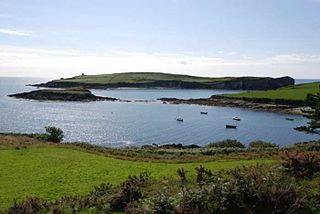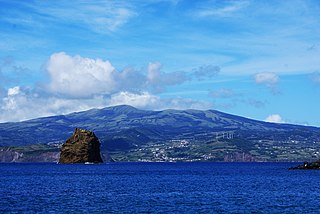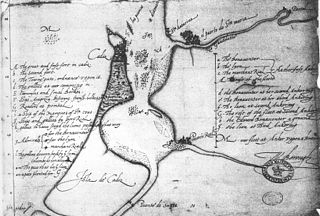 W
WThe 3rd Spanish Armada, also known as the Spanish Armada of 1597, was a major naval event that took place between October and November 1597 as part of the Anglo–Spanish War. The armada, which was the third attempt by Spain to invade or raid the British Isles during the war, was ordered by King Philip II of Spain in revenge for the English attack on Cadiz following the failure of the 2nd Spanish Armada the previous year due to a storm. The Armada was executed by the Adelantado, Martín de Padilla, who was hoping to intercept and destroy the English fleet under Robert Devereux the 2nd Earl of Essex as it returned from the failed Azores expedition. When this was achieved, the Armada would go on to capture either the important port of Falmouth or Milford Haven and use those places as a base for invasion.
 W
WThe Azores Voyage of 1589, also known as Cumberland's Third Voyage, was a series of conflicts in the Azores islands between August and September 1589 by an English military joint stock expedition led by George Clifford, 3rd Earl of Cumberland, during the Anglo–Spanish War. All the islands were attacked either for provisions or the attainment of Spanish and Portuguese prizes. A number of Portuguese and Spanish ships were captured and also included a battle at Faial which resulted in the capture of the fort and the main town, which was subsequently sacked and burned. The English were able to return home unmolested with a total of thirteen prizes – the expedition was a success and with a good profit for the investors although many lives were lost to disease and storms.
 W
WThe Battle of the Barbary Coast was a minor naval engagement that took place off in the Barbary Coast not far from the Gibraltar Strait, on July 26, 1592 during the Anglo-Spanish War. The hard fought action by an English merchant galleon in the Amity of London captained by Thomas White resulted in the capture of two Spanish ships which included a galleon despite them being outnumbered four to one. The prizes were heavily laden with quicksilver and a large amount of very important Papal bulls bound for the West Indies.
 W
WThe Battle of the Bay of Biscay of 1592 was a naval engagement that took place in waters of the Bay of Biscay, in November 1592, between a Spanish naval force of 5 flyboats commanded by Captain Don Pedro de Zubiaur and an English convoy of 40 ships, supported by a 6-warship squadron, during the Anglo-Spanish War (1585–1604) and the French Wars of Religion. The Spanish force led by Captain Zubiaur, despite being outnumbered, engaged the English ships, achieving a resounding success. The English flagship was boarded and burned, causing great confusion among the English convoy. Shortly after, another English force composed of six warships, arrived at the battle, and tried to defend the convoy. After long and intense fighting, the Spaniards were victorious in battle, and three more English ships were captured, besides several ships seriously damaged.
 W
WThe Battle of Bayona Islands, also known as the Battle of Bayona Bay, was a naval engagement that took place in early 1590, off Bayona Islands, near Bayona and Vigo, Spain, between a small Spanish naval force commanded by Captain Don Pedro de Zubiaur, and an Anglo-Dutch flotilla of 14 ships, during the Eighty Years' War, and in the context of the Anglo-Spanish War (1585–1604) and the French Wars of Religion. After several hours of hard combat, the Spanish naval force composed of three flyboats achieved a great success, and the Anglo-Dutch fleet was totally defeated. The flagship of the Dutch was boarded and captured, including another six ships more. Finally, the rest of the Dutch fleet was forced to surrender. Shortly after, Pedro de Zubiaur arriving at Ferrol, along with the captured ships, with great surprise for the Spanish authorities of the port.
 W
WThe Battle of Berlengas Islands was a naval battle which took place off the Portuguese coast on 15 July 1591, during the war between Elizabeth I of England and Philip II of Spain. It was fought between an English privateer squadron under George Clifford, 3rd Earl of Cumberland, who had set out his fortunes by large-scale privateering, and a squadron of 5 Spanish galleys commanded by Francisco Coloma tasked with patrolling the Portuguese coast against privateers. While anchored off the Berlengas, the English ships were surprised by the Spanish galleys, which succeeded in taking one English ship and rescuing two prizes.
 W
WThe action off Bermuda, also known as Grenville's action off the Bermuda's, was a minor naval engagement that took place off the island of Bermuda over three days in late August 1585 during the Anglo–Spanish War between an English galleass, Tiger, and a larger Spanish galleon, Santa Maria de San Vicente. Tiger was victorious when the Spanish ship surrendered after a severe bombardment.
 W
WThe Battle of Blaye of 1593, also known as the Battle of Bec d'Ambès or Battle of the Gironde Estuary, was a naval Spanish victory that took place on 18 April 1593 off Blaye and Bec d'Ambès, Gironde Estuary, France, during the seven-month siege of Blaye between the French-Protestant forces of Henry of Navarre and the French-Catholic garrison of the city led by Governor Jean-Paul d'Esparbès de Lussan d'Aubeterre, in the context of the French Wars of Religion and the Anglo-Spanish War (1585–1604).
 W
WThe Blockade of Western Cuba, also known as the Watts' West Indies Expedition of 1591, was an English privateering naval operation that took place off the Spanish colonial island of Cuba in the Caribbean during the Anglo–Spanish War. The expedition along with the blockade took place between May and July 1591 led by Ralph Lane and Michael Geare with a large financial investment from John Watts and Sir Walter Raleigh. They intercepted and took a number of Spanish ships, some of which belonged to a Spanish plate convoy of Admiral Antonio Navarro, and protected by the Spanish navy under Admiral Diego de la Ribera intending to rid English privateers. The English took or burnt a total of ten Spanish ships including two galleons, one of which was a valuable prize. With this success and the loss of only one ship the blockade and expedition was terminated for the return to England. The blockade was one of the most successful English expeditions to the Spanish Main during the war militarily and financially.
 W
WThe Capture of Cádiz in 1596 was an event during the Anglo-Spanish War, when English and Dutch troops under Robert Devereux, 2nd Earl of Essex, and a large Anglo-Dutch fleet under Charles Howard, 1st Earl of Nottingham, with support from the Dutch United Provinces, raided the Spanish city of Cádiz.
 W
WThe Battle of Castlehaven was a naval battle that took place on 6 December 1601 in the bay off Castlehaven on the south coast of Ireland during the Nine Years' War between a Spanish naval convoy of six ships and an English fleet, commanded by Admiral Richard Leveson and consisting of four warships. The Spanish convoy was protected by fortified positions on shore, a castle, and 600 Spanish and Irish footmen. Five out of six Spanish ships, commanded by General Pedro de Zubiaur were either sunk, captured, or run aground in the battle, while the English fleet lost no ships.
 W
WThe English Armada, also known as the Counter Armada or the Drake–Norris Expedition, was an attack fleet sent against Spain by Queen Elizabeth I of England in 1589 during the undeclared Anglo-Spanish War (1585–1604) and the Eighty Years' War. Led by Sir Francis Drake as admiral and Sir John Norreys as general, it failed to drive home the advantage that England had won upon the failure of the Spanish Armada in the previous year. The Spanish victory marked a revival of Philip II's naval power through the next decade.
 W
WThe action of Faial or the Battle of Faial Island was a naval engagement that took place on 22–23 June 1594 during the Anglo-Spanish War in which the large and rich 2,000 ton Portuguese carrack Cinco Chagas was destroyed by an English fleet after a long and bitter battle off Faial Island in the Azores. The carrack, which was reputedly one of the richest ever to set sail from the Indies, was lost in an explosion which denied the English, as well as the Portuguese and Spanish, the riches.
 W
WThe Battle of Flores was a naval engagement of the Anglo-Spanish War of 1585 fought off the Island of Flores between an English fleet of 22 ships under Lord Thomas Howard and a Spanish fleet of 55 ships under Alonso de Bazán. Sent to the Azores to capture the annual Spanish treasure convoy, when a stronger Spanish fleet appeared off Flores, Howard ordered his ships to flee to the north, saving all of them except the galleon Revenge commanded by Admiral Sir Richard Grenville.
 W
WThe Battle of Flores (1592), also known as Cruising Voyage to the Azores of 1592, or the Capture of the Madre de Deus describes a series of naval engagements that took place from 20 May to 19 August 1592, during the Anglo-Spanish War. The battle was part of an expedition by an English fleet initially led by Sir Walter Raleigh, and then by Martin Frobisher and John Burrough. The expedition involved the capture of a number of Portuguese and Spanish ships including the large Portuguese carrack Madre de Deus, after a long naval battle off the island of Flores in the Azores. The expedition, particularly the capture of the great carrack, was a financial and military success. The rich cargo aboard the carrack, which at the time equaled nearly half the size of the Kingdom of England's royal annual revenue, was subject to mass theft when it arrived in Dartmouth, England, followed by quarrels over the shares of the prize. The expedition had formative consequences for the English both financially and on the future of English exploration.
 W
WThe Battle of the Gulf of Almería, also known as the Battle of Almería Bay or the Battle of Cape of Palos, was a naval Spanish victory that took place in late August, 1591, off Almería, near the Cape Palos, during the Eighty Years' War and the Anglo–Spanish War (1585–1604). The battle occurred when the Spanish fleet of the Adelantado of Castile, Don Martín de Padilla y Manrique, Count of Santa Gadea, sighted an Anglo-Dutch fleet in the waters of Almería, on the southern coast of Spain. The Spanish fleet, led by Martín de Padilla, attacked with such fury the Anglo-Dutch fleet who managed to undo their training, achieved a great success. About 20 Dutch ships and 3 English ships were captured by the Spaniards, and some ships of the rest of the Anglo-Dutch fleet were seriously damaged. On the other hand, the Spanish losses were minimal.
 W
WThe Battle of the Gulf of Cádiz was a naval action which occurred on 7 August 1604, during the last days of the Anglo-Spanish War (1585–1604). The battle took place when a flotilla of two galleons commanded by Antonio de Oquendo engaged two English privateers who were plundering shipping lanes and villages around the Gulf of Cádiz. One of the English ships was captured and the other damaged. Oquendo's action off Cádiz is notable for having been fought just 21 days before the signing of the Treaty of London, which ended the protracted war between England and Spain.
 W
WThe Battle of the Narrow Seas, also known as the Battle of the Goodwin Sands or Battle of the Dover Straits was a naval engagement that took place on 3–4 October 1602 during the Anglo-Spanish War of 1585 and part of the Dutch Revolt. An English fleet under Sir Robert Mansell intercepted and attacked six Spanish galleys under the command of Federico Spinola in the Dover Straits and was fought from off the coast of England and finally off the Spanish Netherlands. The English were soon joined by a Dutch fleet under Jan Adriaanszoon Cant and they completed the destruction.
 W
WThe Newfoundland Expedition also known as Bernard Drake's Newfoundland Expedition was an English naval expedition that took place during the beginning of the declared Anglo-Spanish War in the North Atlantic during summer and autumn of 1585. The area of conflict was situated mainly in an area known as the Grand Banks off present day Newfoundland. The aim of the expedition was to capture the Spanish and Portuguese fishing fleets. The expedition was a huge military and financial success and virtually removed the Spanish and Portuguese from these waters. In addition the raid had large consequences in terms of English colonial expansion and settlement.
 W
WThe Battle of Pantelleria (1586) also known as the Fight at Pantalarea was a naval engagement that took place during the Anglo–Spanish War off the island of Pantelleria on 13 July 1586. The encounter was between an English armed merchant fleet of five ships of the Levant Company in convoy under Edward Wilkinson and a fleet of eleven Spanish and Maltese galleys under Don Pedro de Leyva. The English managed to repel all the attacks and returned home unmolested. Although minor the battle had significant consequences in testing English firepower of which was to be used against the Spanish armada two years later when England was under threat of invasion.
 W
WThe Battle of Pinos was a naval engagement between a Spanish fleet under Admiral Bernardino Delgadillo y Avellaneda and the surviving ships of Francis Drake's expedition to the Spanish West Indies, now in command of Drake's lieutenant, Sir Thomas Baskerville, which took place off the Island of Pinos during the Anglo-Spanish war of 1585. The Spanish squadron was victorious, capturing two English ships.
 W
WThe Capture of Santiago de Cuba was a minor military event that took place towards the end of the Anglo–Spanish War in May 1603. Santiago de Cuba was attacked and sacked by English privateers led by Christopher Cleeve.
 W
WThe Battle of São Vicente was a minor naval engagement that took place off São Vicente, Portuguese Brazil on 3 February 1583 during the Anglo–Spanish War between three English ships, and three Spanish galleons. The English under Edward Fenton on an expedition having failed to enter the Pacific, then attempted to trade off Portuguese Brazil but were intercepted by a detached Spanish squadron under Commodore Andrés de Equino. After a moonlit battle briefly interrupted by a rainstorm the Spanish were defeated with one galleon sunk and another heavily damaged along with heavy losses. Fenton then attempted to resume trading but without success and thus returned to England.
 W
WThe Battle of Sesimbra Bay was a naval engagement that took place on 3 June 1602, during the Anglo-Spanish War. It was fought off the coast of Portugal between an English naval expeditionary force sent out with orders by Queen Elizabeth I to prevent any further Spanish incursions against Ireland or England itself. The English force under Richard Leveson and William Monson met a fleet of Spanish galleys and a large carrack at Sesimbra Bay commanded by Álvaro de Bazán and Federico Spinola. The English were victorious in battle, sinking two galleys, forced the rest to retreat, neutralized the fort, and captured the carrack in what was the last expedition to be sent to Spain by orders of the Queen before her death the following year.
 W
WSingeing the King of Spain's Beard is the derisive name given to a series of attacks by the English privateer Francis Drake against the Spanish in the summer of 1587, beginning in April with a raid on Cádiz. This was an attack on the Spanish naval forces assembling in the Bay of Cádiz in preparation for the planned expedition against England. Much of the Spanish fleet was destroyed, and substantial supplies were destroyed or captured. There followed a series of raiding parties against several forts along the Portuguese coast. A Spanish treasure ship, returning from the Indies, was also captured. The damage caused by the English delayed Spanish preparations for the Armada by more than a year.
 W
WThe Spanish Armada was a Habsburg Spanish fleet of 130 ships that sailed from Lisbon in late May 1588 under the command of the Duke of Medina Sidonia, with the purpose of escorting an army from Flanders to invade England. Medina Sidonia was an aristocrat without naval command experience but was made commander by King Philip II. The aim was to overthrow Queen Elizabeth I and her establishment of Protestantism in England, to stop English interference in the Spanish Netherlands, and to stop the harm caused by English and Dutch privateering ships that disrupted Spanish interests in the Americas.
 W
WThe Battle of the Strait of Gibraltar was a naval action off Gibraltar on 24th of April, 1591. A fleet of three English merchant vessels escorted by a larger armed merchant vessel Centurion was attacked by five Spanish galleys. Ultimately, the Spanish were repelled, but not before the English vessel Dolphin was sunk by one of the galleys.